- Home
- TV History
- Network Studios History
- Cameras
- Archives
- Viewseum
- About / Comments
Skip to content
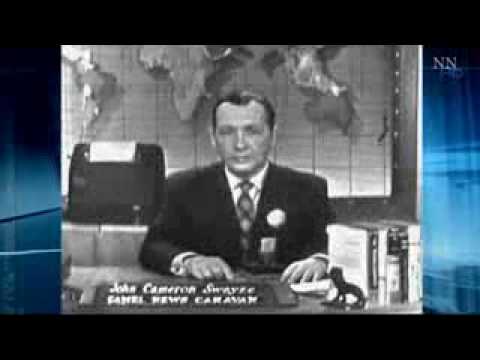



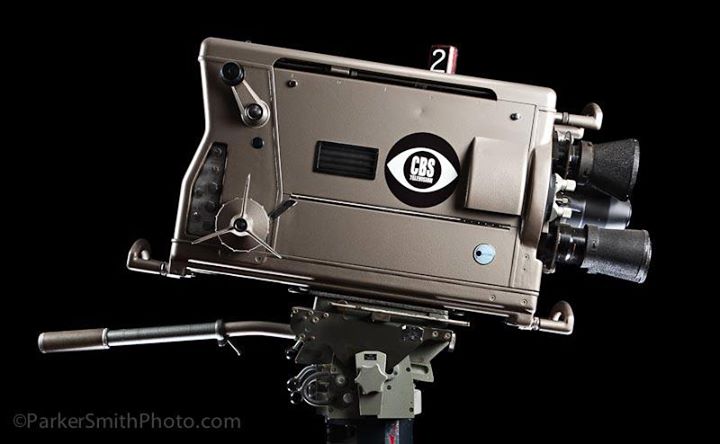

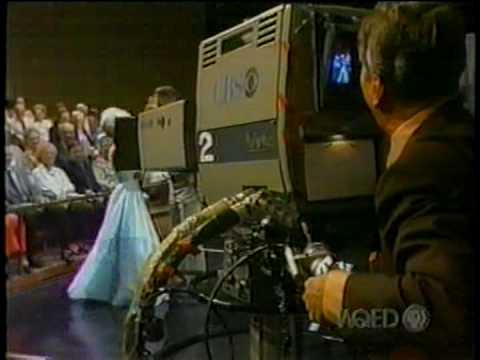











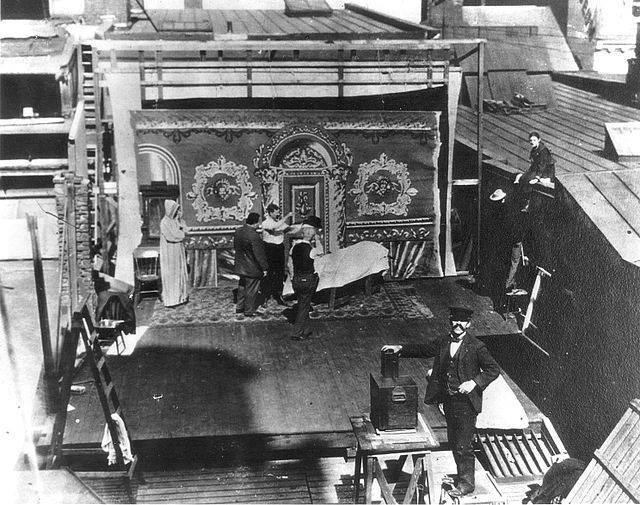

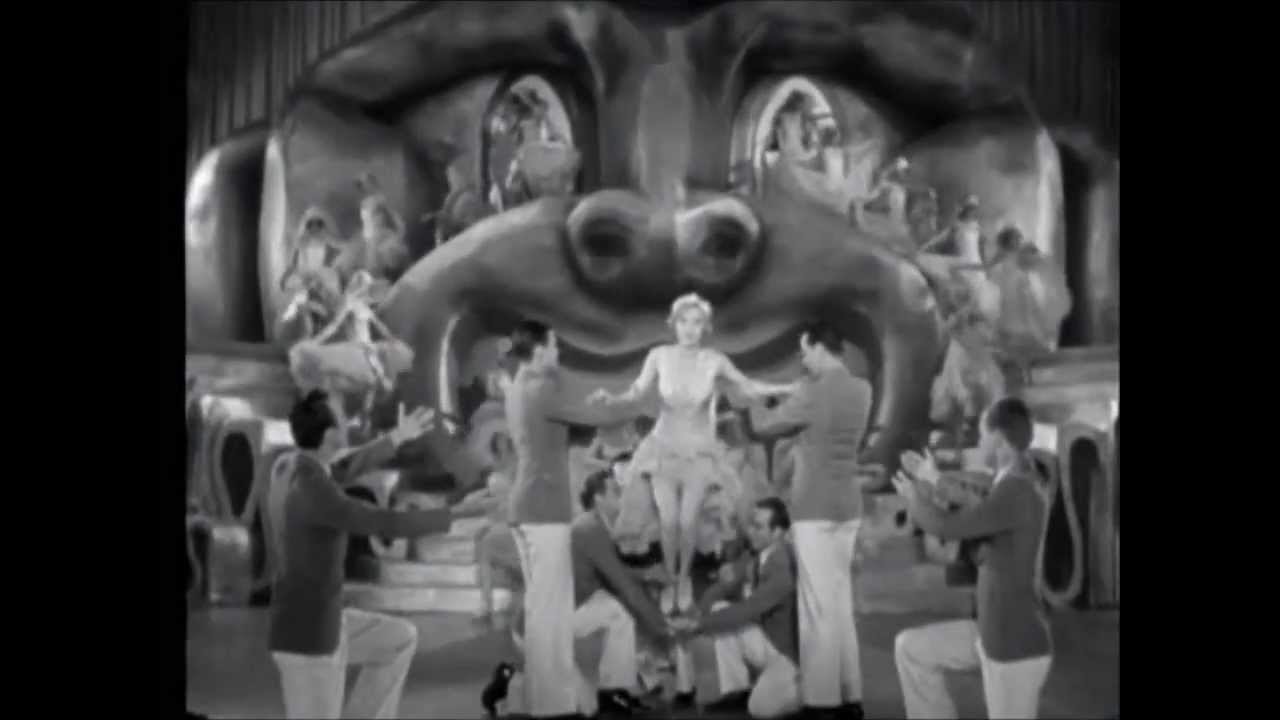

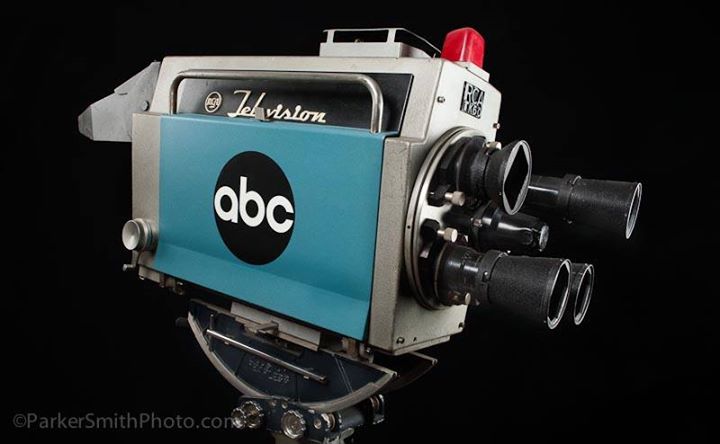

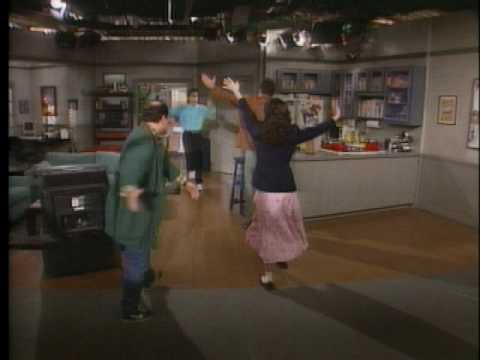











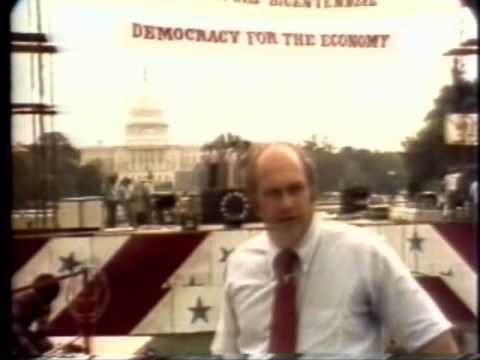

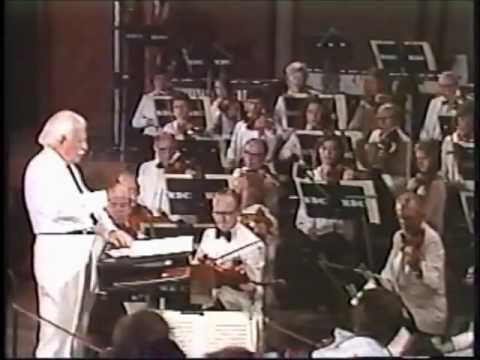

Posts in Category: TV History
Page 72 of 136
« Previous
1
2
3
4
5
6
7
8
9
10
11
12
13
14
15
16
17
18
19
20
21
22
23
24
25
26
27
28
29
30
31
32
33
34
35
36
37
38
39
40
41
42
43
44
45
46
47
48
49
50
51
52
53
54
55
56
57
58
59
60
61
62
63
64
65
66
67
68
69
70
71
72
73
74
75
76
77
78
79
80
81
82
83
84
85
86
87
88
89
90
91
92
93
94
95
96
97
98
99
100
101
102
103
104
105
106
107
108
109
110
111
112
113
114
115
116
117
118
119
120
121
122
123
124
125
126
127
128
129
130
131
132
133
134
135
136
Next » 

The Early History Of NBC Television News
On July 9, 2014
- TV History
The Early History Of NBC Television News
This 60th Anniversary video from 2008 starts with some of the only surviving footage of television’s first network news show, ‘The NBC Television Newsreel’ with the voice of Paul Alley. On that show, there was no on-camera anchor, only Alley narrating silent film clips provided by Fox Movietone News. The show aired Monday, Wednesday and Friday nights from 7:30 till 7:45. It began February 15, 1948, but within a few months, the name was changed to ‘The Camel Newsreel Theater’ when Camel cigarettes became the sponsor.
It was actually Camel, and the Esty Advertising Agency (who handled the account) that helped push the development of a nightly news show into being. Camel wanted a five night a week show with a live anchor, so, Esty created a competition between NBC and CBS for the lucrative Camel account. CBS got a wake up call, but NBC got the nod and thus was born ‘The Camel News Caravan’ with John Cameron Swayze as host.
In today’s next post, I’ll share some interesting background I’ve recently discovered on ‘The Camel News Caravan’, it’s host and his wig. Enjoy and share!
https://www.youtube.com/watch?v=mFvTrGDTCYU
Recorded from nightly news Insight from John Cameron Swayze to Brian Williams
You Mean They Weren’t Driving A Real Car To California?
On July 8, 2014
- TV History
You Mean They Weren’t Driving A Real Car To California?
From Season 4, Episode 12, here’s the cast of ‘I Love Lucy’ setting out for California on January 10, 1955…sort of.
The car is a new Pontiac convertible. In case you did not know, “California, Here I Come” was written for the 1921 Broadway musical ‘Bombo’, starring Al Jolson. The song was written by Buddy DeSylva and Joseph Meyer, with Jolson often listed as a co-author. Jolson recorded the song in 1924 and it was an instant hit. Enjoy and share!
Classic! The Marconi Mark IV
On July 8, 2014
- TV History
Classic! The Marconi Mark IV
Here is another of the beautiful portraits Parker Smith took of my camera collection. This is one of my favorites. In the US, there are only 6 of the Marconi Mark IVs known to have survived…this is one of them. Please click to enlarge for a clearer image.
Unfortunately, none of the Ed Sullivan Mark IV cameras which shot The Beatles survived. That I know of, none of the CBS New York or Television City Mark IVs made it either. I repainted this camera and dressed it to honor the Sullivan, Beatle cameras.
This was Marconi’s answer to the RCA TK60 and both made great pictures with their 4 1/2 inch Image Orthicon tubes. Enjoy and share.


Lawrence Welk Trades Places With The Cameraman…1978
On July 8, 2014
- TV History
Lawrence Welk Trades Places With The Cameraman…1978
The show was an ABC heavyweight from ’55 till ’71 when it was canceled, but started on a syndicated basis the next year. The 77-79 seasons were shot at CBS Television City. Here’s Lawrence behind a Norelco PC60 with it’s “dual exhausts”. There was a video of this but now it’s gone.
Lawrence Welk…Television’s First “Stereo” Sound Show
On July 8, 2014
- TV History
Lawrence Welk…Television’s First “Stereo” Sound Show
Twenty years before television was able to broadcast high quality stereo sound, ABC had broadcast ‘The Lawrence Welk Show’ in “stereo”…sort of.
The year was 1958. Now, due to the fact that stereophonic television had not yet been invented you would think this was impossible, but if you have your own radio and television networks…you can do it. I’m surprised NBC or CBS didn’t beat them to it.
Here’s the way it worked…ABC simulcast the show on its radio and TV network, with the TV side airing one mono channel, and the radio side airing the other; viewers would tune in both the TV and the radio to achieve the stereophonic effect. Each channel miked the instruments differently. At the link is a Billboard Magazine advertisement of the process.
https://books.google.com/books?id=-QoEAAAAMBAJ&pg=PA23&hl=en#v=onepage&q&f=false
The show debuted on ABC Television on July 2, 1955 and this photo is from a few weeks after the network debut. It was taken on the first night at the show’s new home at ABC Studios at Prospect and Talmadge in Hollywood.
Welk’s shows actually started in 1951 on KTLA and originated from the Aragon Ballroom at Venice Beach. In 1954, it moved to The Hollywood Palladium where the first few ABC shows were done. By 1957, the show was so popular, it overwhelmed the perennial star of Saturday nights, Sid Caesar. Enjoy and share!
Another Beauty Shot…Norelco PC60
On July 7, 2014
- TV History
Another Beauty Shot…Norelco PC60
Here is another of Parker Smith’s portraits of a few of my cameras. This PC60 began life at CBS Studio 52 in New York, just around the corner from Studio 50, The Ed Sullivan Theater. It later went to CBS Washington and was used on the White House mobile unit. Enjoy and share!
Preparing For One Of Television’s Most Memorable Scenes…
On July 7, 2014
- TV History
Preparing For One Of Television’s Most Memorable Scenes…
We all know what happens next, but here is a rare classic shot of Lucy having her “flaming nose” applied by Hal King. Behind Lucille Ball is Jess Oppenheimer and on the right is Director of Photography Carl Freund. Enjoy and share!
You Mean Julia Was Not Alone In That Kitchen?
On July 7, 2014
- TV History
You Mean Julia Was Not Alone In That Kitchen?
Obviously not! Got a caption for this? Enjoy and share!


I Told You Mitch Miller Was A Joker…Can You Spot The Joke Here?
On July 7, 2014
- TV History
I Told You Mitch Miller Was A Joker…Can You Spot The Joke Here?
As you watch, you’re in for a surprise as there is “a joker in the deck”, but not a word was ever said about it on the show. Thanks to Kevin Vahey for this bit of fun. (The joker, Johnny Carson, shows up at 2:53, 3:28 and 4:11)
Making Movies In 1899…Lubin Studios, Philadelphia
On July 6, 2014
- TV History
Making Movies In 1899…Lubin Studios, Philadelphia
Before there was Hollywood, there was Betzwood. Before there were film moguls and studio lots in California, Siegmund Lubin was doing it in Pennsylvania.
Lubin was originally an optical and photography expert in Philadelphia but he became intrigued with Thomas Edison’s motion picture camera and saw the potential in selling similar such equipment as well as the making of films. Lubin constructed his own combined camera/projector he called a “Cineograph” and his lower price and marketing know-how brought reasonable success.
In 1897 Lubin began making films for commercial release. Certain his business could prosper, the following year he rented low-cost space on the roof of a building in Philadelphia’s business district (seen here). He exhibited his new equipment at the 1899 National Export Exposition in Philadelphia and the 1901 Pan-American Exposition in Buffalo, New York.
The insatiable appetite of the American public for motion picture entertainment saw Lubin’s film company undergo enormous growth. Aided by French-born writer and poet Hugh Antoine d’Arcy, who served as the studio’s publicity manager, in 1910 Siegmund Lubin built a state of the art studio on the corner of Indiana avenue and Twentieth Street in Philadelphia that became known as “Lubinville.”
At the time, it was one of the most modern studios in the world, complete with a huge artificially lit stage, editing rooms, laboratories, and workshops. The facility allowed several film productions to be undertaken simultaneously. The Lubin Manufacturing Company expanded production beyond Philadelphia, with facilities in Jacksonville, Florida, Los Angeles, and then in Coronado, California.
In 1912, Lubin purchased a 350-acre estate in Betzwood in the northwest outskirts of Philadelphia and converted the property into a studio and film lot. This was to be one of the first real film lots in history and is shown here complete with it’s “western set”. Enjoy and share!


A Rare Bit Of Film History…Making Movies With Sound
On July 6, 2014
- TV History
A Rare Bit Of Film History…Making Movies With Sound
‘Show Girl in Hollywood’ was released in April of 1930 and is one of the first sound films made. Fortunately it includes in it’s story line a bit about how these films were made.
As you will see in this rare clip, condenser mics are hung from the rafters and there are multiple cameras shooting simultaneously from soundproofed booths. The first look at the cameras comes at :43 and at 1:25, we go inside the booth and hear the whur of the camera. There are several more camera shots, but at 3:09 and 3:11 we get a look at the audio mixing board and the lathe cutting the disc the sound was recorded on.
Cameras were noisy, so a soundproofed cabinet was used to isolate the loud equipment from the actors, at the expense of a drastic reduction in the ability to move the camera. For a time, multiple-camera shooting was used to compensate for the loss of mobility and innovative studio technicians could often find ways to liberate the camera for particular shots.
The necessity of staying within range of still microphones meant that actors also often had to limit their movements unnaturally. ‘Show Girl in Hollywood’, from First National Pictures (which Warner Bros. had taken control of thanks to its profitable adventure into sound), gives us one of the best ever behind-the-scenes look at some of the techniques involved in shooting early talkies.
Several of the fundamental problems caused by the transition to sound were soon solved with new camera casings, known as “blimps”, designed to suppress noise and boom microphones that could be held just out of frame and moved with the actors.
With sound came a new, strict standard of 24 fps. Sound also forced the abandonment of the noisy arc lights used for filming in studio interiors. The switch to quiet incandescent illumination in turn required a switch to more expensive film stock. The sensitivity of the new panchromatic film delivered superior image tonal quality and gave directors the freedom to shoot scenes at lower light levels than was previously practical.
Thanks to our friend, NBC audio legend Joel Spector for sharing this with us! Enjoy and share!
http://www.youtube.com/watch?v=oafgeA41QTc
Alice White performs “I’ve Got My Eyes On You” in the 1930 musical Show Girl In Hollywood – Learn more about Alice at http://www.alicewhite.org
RCA Catalog Cover? Nope! Better…
On July 6, 2014
- TV History
RCA Catalog Cover? Nope! Better…
A few months ago, well known Atlanta photographer Parker Smith came to my house and shot my camera collection all day long. This is one of those shots…a beautiful portrait of my RCA TK60, but this is not just one shot! It’s a composite of about a dozen shots. This actually looks much better and sharper if you click on it for the bigger view.
He would relight each shot and later combine them with Photoshop to merge the images into one. I think RCA would be jealous. Thank you Parker! More to come soon!


‘Seinfeld’ At 25…Yada, Yada, Yada…
On July 6, 2014
- TV History
‘Seinfeld’ At 25…Yada, Yada, Yada…
Twenty five years ago yesterday, July 5, 1989, the show premiered as ‘The Seinfeld Chronicles’ as a one time test on NBC. After it aired, a pickup by NBC did not seem likely and the show was offered to Fox, which declined to pick it up. Rick Ludwin, head of late night and special events for NBC, however, diverted money from his budget by canceling a Bob Hope television special, and the next four episodes were filmed.
Those four episodes aired May 31 June 21, 1990 together with the pilot constituted the first season. These four episodes were highly rated as they followed ‘Cheers’ on Thursdays at 9:30 p.m., and the series was finally picked up.
NBC ordered 13 more episodes and the second season aired January to June of 1991 but only 12 episode ran as the scheduled premiere of January 16, 1991 was bumped due to the outbreak of the Persian Gulf war.
Larry David believed that he and Jerry Seinfeld had no more stories to tell, and advised his partner to turn down the order, but Seinfeld agreed to the additional episodes. For the first three seasons, Jerry’s stand-up comedy act would bookend an episode, even functioning as cut scenes during the show.
Here’s fun few minutes of outtakes from the show that take us on location and into the studio at CBS Studio Center in LA. Enjoy and share.
https://www.youtube.com/watch?v=yNKdv_JyzyQ
This is a video compilation of behind the scenes footage taken from NBC’s Seinfeld set. Includes a variety of raw footage, bloopers, a cast introduction, and…
The First ‘I Love Lucy’…The Photo And The Video
On July 5, 2014
- TV History
The First ‘I Love Lucy’…The Photo And The Video
Although “Lucy Thinks Ricky Is Trying To Murder Her” was the fourth episode to air, it was actually the first one shot. The film date was September 8, 1951 and the air date, November 5.
This photo was probably taken on September 7, a day before dress rehearsal. Being the first show, a lot of initial blocking was needed as was wardrobe planning. They wanted to do the show without stopping and this meant Lucy and others had to wear layers of clothes for quick changes.
In this episode, Lucy only has one costume, but in the second and third, there are several changes which she wore in layers, but that stopped after the third episode and they would stop for changes. Pickups were few and usually done at the end.
Nice Shot NBC Brooklyn Studios
On July 5, 2014
- TV History
Nice Shot NBC Brooklyn Studios
Jodie Peeler sent me this recently and as I studied the photo of my favorite cameras in action, I began to try to fix the location. The donut box on the crane mounted TK41 told me this was New York…they were the only NBC crews to do this. CBS New York did this too with their TK30s. Must be something in the water?
The dead giveaway was the cabling on the sound boom. Notice it goes up. NBC Brooklyn was the only place that had overhead cable guides for the booms. As I understand it, there were big free swinging arms mounted under the lights that were rigged to keep the audio cables off the floor.
The beauty of these two huge studios was their size. Cameras were able to move in here like on movie sets and producers and crews took full advantage of it with lots of sweeping shots. There were at least two Houston Fearless 30B cranes (shown here), several Panoram dollies (lower camera) and lots of ped cameras.
The camera cables were too heavy to use the overhead system, but in order to get as much cable off the floor as possible, the audio was flown. Just off the top of my head, I think Studio A was 12,000 square feet and B was 10,000. Any guesses on what show or special this if from? Enjoy and share!
Laugh Along With Mitch? Why Not!
On July 5, 2014
- TV History
Laugh Along With Mitch? Why Not!
I don’t know who the joke was meant for in this picture, but I’ve heard that Mitch Miller had a wicked sense of humor and that there were some classic off camera practical jokes played on this set.
‘Sing Along With Mitch’ began in 1961 on NBC, the same year ‘The Dick Van Dyke Show’ debuted on CBS. It was done from the huge NBC Brooklyn Studios till it was canceled in 1964 due to changing tastes in music.
Although Miller was head of A&R (Artist and Repertoire) at Columbia Records, and responsible for signing artist and finding hits for them to record, he was not a fan of rock and roll. Enjoy and share!
‘The Dick Van Dyke Show’…Rare Shots & Interesting Facts
On July 5, 2014
- TV History
‘The Dick Van Dyke Show’…Rare Shots & Interesting Facts
Until last week, the bedroom scene photo was the only one I had ever seen of this show in production. In that one, you can see director Jerry Paris just behind Dick in his famous red sweater.
The show was shot at Desilu Studios and in this new photo from the audience area, we get a good look at the homebase set. This was the last major primetime series to have its entire run filmed in black and white. The show was due to be shot in color after the 5th year, but that never happened because of the cast and producers decision to end the show after 5 years.
Sally Rogers was the first woman on an American television show to portray a solely independent woman. Before that, women were mostly cast as housewives. The character of Sally Rogers was inspired by Lucille Kallen, who wrote for ‘Your Show of Shows’ and Selma Diamond who wrote for ‘Caesar’s Hour’.
The show’s production company was called Calvada Productions. The name came from the names of all of the key persons involved in production: Carl Reiner, Sheldon Leonard, Dick Van Dyke and Danny Thomas. In one program, co-producer, Leonard played a character called “Big Max Calvada”.
The series originally was to focus on Rob at the office with Sally Rogers as the lead female character and Laura as a minor one. The character of Laura became so popular that Mary Tyler Moore became the lead female character and more of the focus of the show shifted to the relationship between Rob and Laura. Many times situations at the office were still focused on Rob and Laura. This put a strain on the relationship between Rose Marie and Mary Tyler Moore, and while the two ladies got along well, they never became close friends.
Morey Amsterdam and Richard Deacon (Mel) were actually close friends. According to Deacon, many of the best insults Buddy hurled at Mel were worked out when the two went out for drinks after work. During Richard Deacon’s first season as Mel Cooley, he was also finishing up the last season as Fred Rutherford on ‘Leave It to Beaver’.
Final fact…did you know Johnny Carson was a runner-up for the role of Rob Petrie? Enjoy and share!
Here’s One For All The “Sparkys”
On July 4, 2014
- TV History
Here’s One For All The “Sparkys”
Do you have a favorite sign from your broadcast facility to share? If so, please do! I think this one was on the front of a quad VTR.


July 4, 1976…America’s 200th Birthday On ABC
On July 4, 2014
- TV History
July 4, 1976…America’s 200th Birthday On ABC
Here is the start of a three hour broadcast hosted by Harry Reasoner that took viewers from one end of the country to the other, just to see how we were celebrating he Bicentennial.
Although Harry opens with a “good moring”, I think this was an afternoon show that started at 1 Eastern. There are reporters everywhere, including a young Ted Koppel in Washington.
From July 4, 1976, here is some coverage of some Bicentennial events from ABC News and Harry Reasoner, beginning at 1 PM EST. This came in to me from a trade…


Interesting Tape Artifact…July 4, 1976, Boston Pops National Debut
On July 4, 2014
- TV History
Interesting Tape Artifact…July 4, 1976, Boston Pops National Debut
Somehow, there is no video record of the first ever nationwide broadcast of the now famous Boston Pops 4th Of July concert on CBS, BUT…there is this piece of work tape.
This eighteen minute clip will start with CBS reporter Charles Collingwood preparing to talk with Walter Cronkite in New York. We never hear Charles or Walter…only the audio of the concert itself and on the bright side, we do get to see the whole ‘Overture Of 1812’ and all the fireworks. At the very end (17:54) Collingwood talks with Cronkite again. I understand Walter was quite happy and gushing praise.
By the way, I think this year’s concert was done last night due to the approaching Hurricane Arthur. I assume the taped show will run tonight as usual. Thanks to Kevin Vahey for sharing this.
Page 72 of 136
« Previous
1
2
3
4
5
6
7
8
9
10
11
12
13
14
15
16
17
18
19
20
21
22
23
24
25
26
27
28
29
30
31
32
33
34
35
36
37
38
39
40
41
42
43
44
45
46
47
48
49
50
51
52
53
54
55
56
57
58
59
60
61
62
63
64
65
66
67
68
69
70
71
72
73
74
75
76
77
78
79
80
81
82
83
84
85
86
87
88
89
90
91
92
93
94
95
96
97
98
99
100
101
102
103
104
105
106
107
108
109
110
111
112
113
114
115
116
117
118
119
120
121
122
123
124
125
126
127
128
129
130
131
132
133
134
135
136
Next »